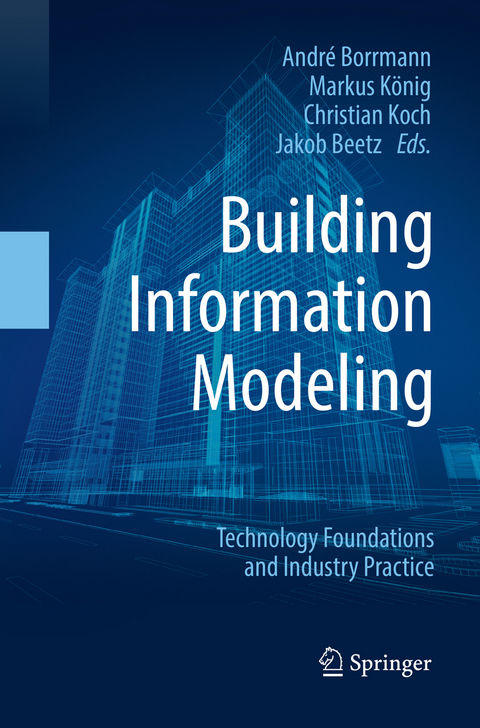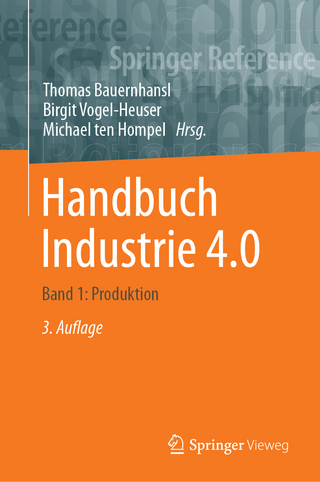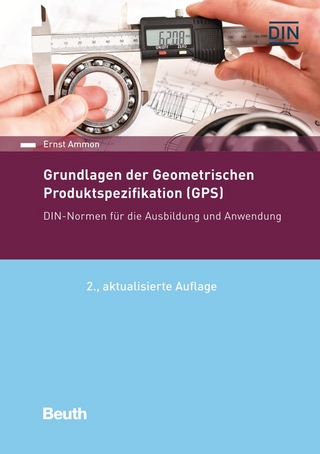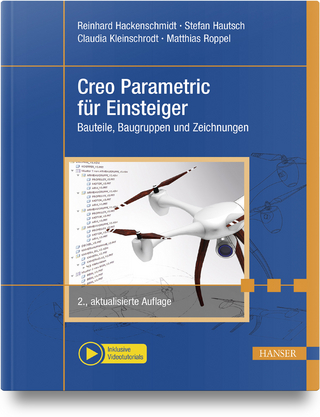
Building Information Modeling
Springer International Publishing (Verlag)
978-3-030-06536-2 (ISBN)
The book's content is divided into six parts: Part I discusses the technological basics of BIM and addresses computational methods for the geometric and semantic modeling of buildings, as well as methods for process modeling. Next, Part II covers the important aspect of the interoperability of BIM software products and describes in detail the standardized data format Industry Foundation Classes. It presents the different classification systems, discusses the data format CityGML for describing 3D city models and COBie for handing over data to clients, and also provides an overview of BIM programming tools and interfaces. Part III is dedicated to the philosophy, organization and technical implementation of BIM-based collaboration, and discusses the impact on legal issues including construction contracts. In turn, Part IV covers a wide range of BIM use cases in the different lifecycle phases of a built facility, including the use of BIM for design coordination, structural analysis, energy analysis, code compliance checking, quantity take-off, prefabrication, progress monitoring and operation. In Part V, a number of design and construction companies report on the current state of BIM adoption in connection with actual BIM projects, and discuss the approach pursued for the shift toward BIM, including the hurdles taken. Lastly, Part VI summarizes the book's content and provides an outlook on future developments.
The book was written both for professionals using or programming such tools, and for students in Architecture and Construction Engineering programs.
André Borrmann is Full Professor for Computational Modeling and Simulation, and Chairman of the Center of Digital Methods for the Built Environment at Technische Universität München. His research focuses on the technological aspects of Building Information Modeling. Professor Borrmann is currently chairing the German Association of Computing in Civil Engineering (GACCE). He is advising the German government concerning its BIM roadmap and is actively supporting the construction industry's shift towards the adoption of advanced digital technology. Related to this, he is pushing forward the international standardization activities of buildingSMART. Markus König is Full Professor for Computing in Engineering at Ruhr-Universität Bochum. His research interests include building information modeling, lean construction, simulation-based scheduling, knowledge management, internet of things as well as virtual and augmented reality. He supported the development of the "Road Map for Digital Design and Construction" for the German government and is now co-responsible for its implementation by 2020. Professor König established the first BIM Professional certification program in Germany and initiated various practical BIM networks in Germany. Christian Koch is Full Professor and Chair of Intelligent Technical Design, and Course Director of the M.Sc. Program Digital Engineering at the Bauhaus-Universität Weimar. His research and teaching interests are in the foundations and applications of modern information and communication technology (ICT) during the design, the construction and the operation of civil infrastructure using methods of Building Information Modeling (BIM), Computer Vision and Machine Learning as well as Virtual and Augmented Reality. Jakob Beetz works as a full professor for Computational Design at the Department of Architecture of the RWTH Aachen University, Germany. He has been active in numerous international research, development and standardization efforts in the fields of Building Information Modeling, Computer Supported Collaborative Work, Interoperability, Linked Data and Semantic Web. He is a co-founder of the Open Source model server platform bimserver.org and worked on the development of the Linked Data representation of the Industry Foundation Classes ifcOWL and its standardization.
1 Building Information Modeling - Why? What? How?.- 2 Principles of Geometric Modeling.- 3 Data modeling.- 4 Process modeling.- 5 Industry Foundation Classes - A standardized data model for the vendor-neutral exchange of digital building models.- 6 Process-based definition of model content.- 7 IFC certification of BIM software.- 8 Structured vocabularies in construction: Classifications, taxonomies and ontologies.- 9 COBie - A specification for the Construction Operations Building Information Exchange.- 10 Linked Data.- 11 Modeling cities and landscapes in 3D with CityGML.- 12 BIM programming.- 13 BIM Project Management.- 14 Collaborative Data Management.- 15 Common Data Environment.- 16 BIM Manager.- 17 Integrating BIM in Construction Contracts.- 18 BIM-based design coordination.- 19 BIM for structural engineering.- 20 BIM for energy analysis.- 21 BIM for construction safety and health.- 22 BIM-based Code Compliance Checking.- 23 BIM-based Quantity Take-Off.- 24 Building surveying for as-built modeling.- 25 BIM in industrial prefabrication for construction.- 26 BIM for 3D printing in construction.- 27 BIM-based production systems.- 28 BIM-based progress monitoring.- 29 BIM in the Operation of Buildings.- 30 BIM at HOCHTIEF Solutions.- 31 Arup's digital future: the path to BIM.- 32 BIM at OBERMEYER Planen + Beraten.- 33 BIM at Hilti.- 34 BIM at STRABAG.- 35 Conclusions and Outlook.
| Erscheinungsdatum | 14.01.2019 |
|---|---|
| Zusatzinfo | XXV, 584 p. 297 illus., 230 illus. in color. |
| Verlagsort | Cham |
| Sprache | englisch |
| Maße | 155 x 235 mm |
| Gewicht | 926 g |
| Themenwelt | Informatik ► Weitere Themen ► CAD-Programme |
| Schlagworte | Applied Computing in Architecture • BIM - Building Information Modeling • BIM – Building Information Modeling • BIM Use Cases • Computer-aided Engineering • Construction Management • Technology Management |
| ISBN-10 | 3-030-06536-7 / 3030065367 |
| ISBN-13 | 978-3-030-06536-2 / 9783030065362 |
| Zustand | Neuware |
| Informationen gemäß Produktsicherheitsverordnung (GPSR) | |
| Haben Sie eine Frage zum Produkt? |
aus dem Bereich


